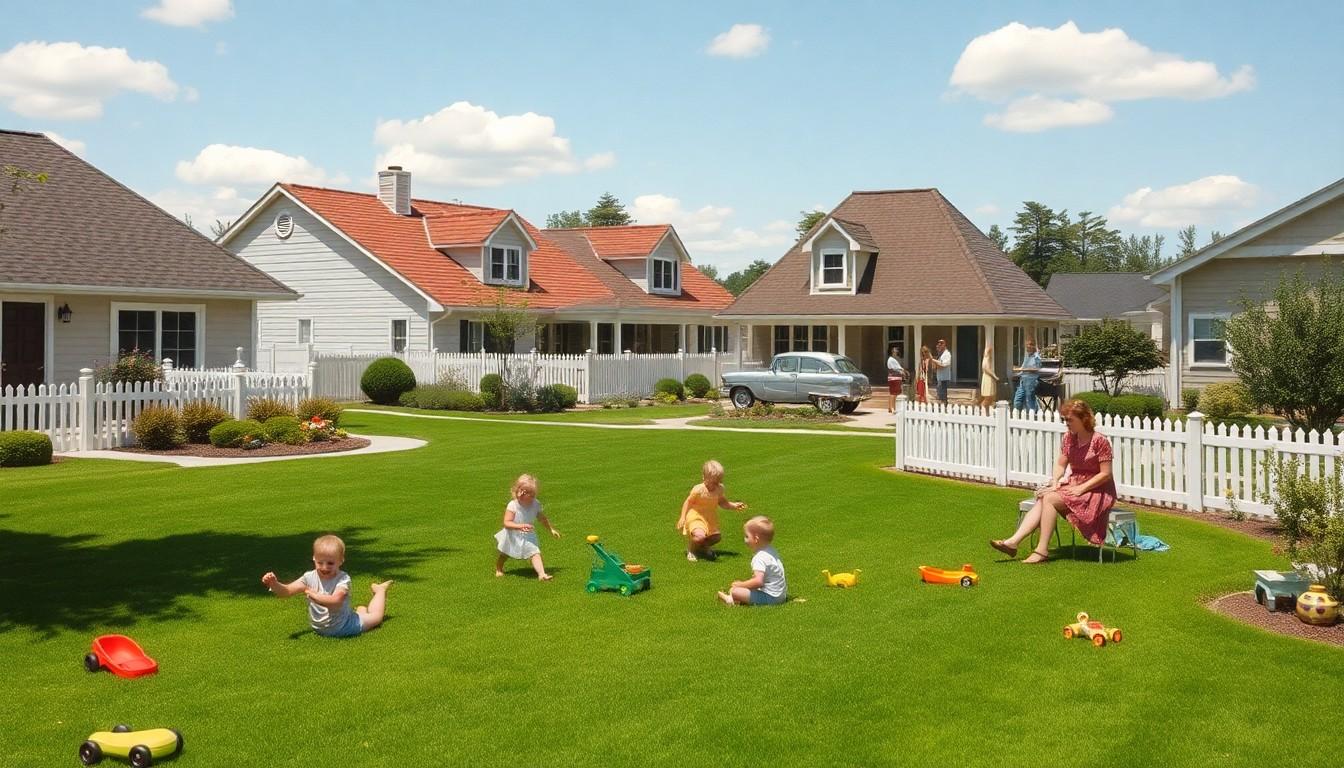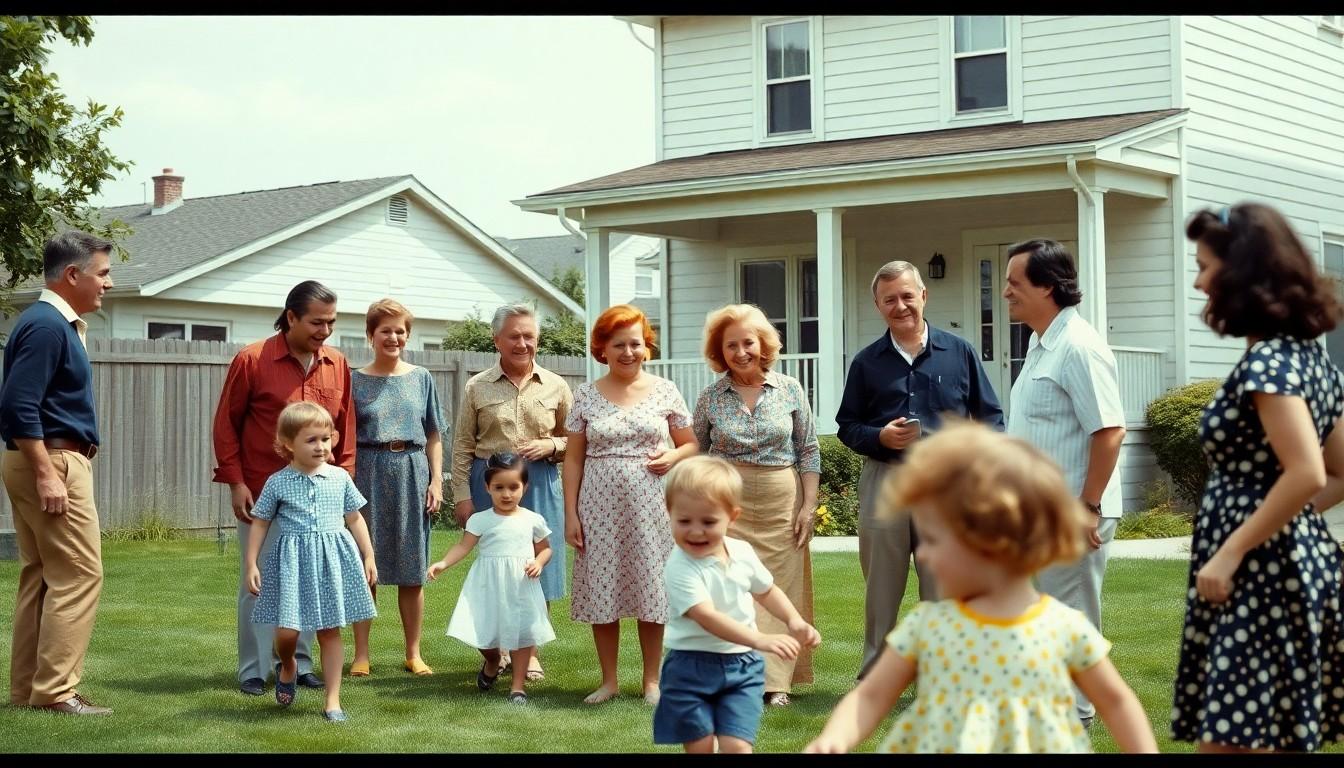
One of the Benefits of the New Suburban Lifestyle of the 1950s Was That It Transformed Communities
The 1950s ushered in a suburban boom that turned the American dream into a reality for millions. Picture this: white picket fences, sprawling lawns, and the sweet sound of kids playing outside while parents sip lemonade on the porch. It wasn’t just a scene from a classic TV show; it was the new suburban lifestyle, and it came with some serious perks.
One of the standout benefits of this era was the sense of community that blossomed in these neighborhoods. Neighbors became friends, sharing barbecues and gossip over the garden fence. This tight-knit atmosphere fostered connections that many still cherish today. So, let’s dive into how the charm of suburban living in the ’50s not only shaped families but also created lasting bonds that made life just a little sweeter.
One of the Benefits of the New Suburban Lifestyle of the 1950s Was That
The 1950s marked a significant shift in American living, as more families embraced suburban life. This period saw the rise of neighborhoods designed to accommodate the growing post-war population. Families moved into new homes equipped with modern amenities, which enhanced daily comfort.
Affordability played a crucial role in this movement. The GI Bill facilitated home purchases, making it easier for veterans to acquire property. Many families benefited from low-interest loans, enabling them to invest in homes in these newly developed communities.
Community engagement flourished during this era. Residents created social networks through local events and activities. Barbecues became popular gatherings, fostering friendships among neighbors. Local schools and parks emerged as central spots for social interaction, enhancing community ties.
Safety and tranquility attracted families to suburban areas. Reduced crime rates and spacious environments offered a welcome escape from urban challenges. Children enjoyed outdoor play space, while parents appreciated the serene surroundings.
Urban planners focused on creating self-sufficient neighborhoods. Amenities like shopping centers and schools were within walking distance, streamlining daily life. This approach promoted a sense of convenience, making suburban life appealing.
In the 1950s, suburban living encapsulated a vision of prosperity and stability. The lifestyle resonated with many, shaping perceptions of the American dream. Through community bonds and enhanced quality of life, the suburban experience significantly influenced American culture.
Enhanced Community Connections

The suburban lifestyle of the 1950s fostered strong community ties. Neighbors engaged in various activities that strengthened friendships.
Neighborhood Engagement
Local events provided opportunities for camaraderie. Block parties and neighborhood gatherings encouraged families to join in. Many residents contributed to community initiatives, enhancing collaboration. School functions also served as bonding experiences. Friends often organized activities that brought everyone together, creating a shared sense of belonging. Through these interactions, residents established friendships that lasted for years.
Family-Centric Environments
Suburban areas prioritized family-friendly spaces. Parks and playgrounds became central hubs for children and parents. Families enjoyed outdoor activities, which promoted healthy lifestyles and socialization. Homes often featured yards where kids could play freely, fostering a nurturing atmosphere. Additionally, schools were easily accessible, supporting education and involvement. Family engagement thrived in these environments, where everyone participated in community life.
Economic Opportunities
The suburban lifestyle of the 1950s fostered significant economic benefits, particularly through affordable housing and increased job accessibility.
Affordable Housing
Suburbs offered cost-effective homeownership options for many families. Low-interest loans made mortgages accessible, enabling home purchases for veterans and their families. The GI Bill further provided financial assistance, facilitating a surge in affordable housing developments. Families found new homes with larger living spaces and yards, which urban settings often lacked. Convenient locations attracted those seeking a better quality of life. Diverse housing styles, such as ranch and split-level homes, catered to various preferences, making suburban living appealing.
Increased Job Accessibility
Job opportunities expanded as industries relocated to suburban areas. Convenient access to transportation made commuting easier for residents. Suburban residents enjoyed proximity to growing businesses and factories, which supported local economies. Many also benefited from employment options with flexible work hours tied to the suburban pace of life. More families engaged in small businesses, contributing to grassroots economic growth. Local shopping centers sprang up, providing jobs and services to communities. Economic networks flourished, driven by suburban entrepreneurship and increased job availability.
Improved Living Standards
The suburban lifestyle of the 1950s significantly enhanced living standards for many families. This era marked a shift towards greater homeownership and community-centric living.
Homeownership and Stability
Homeownership surged during the 1950s, thanks to the GI Bill and accessible loans, allowing many families to buy homes. New suburban developments featured single-family houses that offered larger living spaces compared to urban apartments. Stability followed, as families settled in neighborhoods where they could establish roots and build lasting relationships. Increased property values relieved financial stress; homeowners enjoyed equity gains over time. Consistency in homeownership contributed to a sense of pride and accomplishment, aligning closely with the American dream of prosperity. Strong residential neighborhoods fostered community involvement, enabling families to engage with one another and create a nurturing environment for children.
Access to Amenities
Suburbs boasted a range of amenities designed to enhance daily life. Shopping centers emerged, providing convenient access to groceries, retail, and services, simplifying the errands families needed to run. Parks and playgrounds offered abundant opportunities for recreation, promoting active lifestyles. Local schools became focal points for education and social interactions, ensuring children received quality education close to home. Public transportation options improved, allowing easy commutes to urban job centers while maintaining suburban tranquility. Residents enjoyed the advantages of self-sufficient neighborhoods where essential services were just a short walk or drive away, enriching the suburban experience and strengthening community bonds.
Cultural Shifts
Suburban life in the 1950s initiated notable cultural shifts, particularly in family dynamics and entertainment choices.
Rise of the Nuclear Family
The 1950s marked a significant rise in the nuclear family model. Families typically consisted of two parents and their children, fostering a close-knit environment. Parents sought stability, which suburban homes provided. Increased homeownership contributed to the sense of security many families craved. Children often experienced a structured upbringing with designated spaces for play and learning. Social gatherings like barbecues became common, strengthening familial bonds. Such dynamics influenced societal norms that valued family-oriented lifestyles. The focus shifted from extended family units to immediate family connections, reshaping social interactions and expectations.
Impact on Entertainment and Leisure
Suburban life transformed how families engaged in entertainment and leisure activities. Cinemas and drive-ins gained popularity, offering convenient options for family outings. Parks emerged as essential venues for community events, encouraging social interaction among neighbors. Sports leagues and neighborhood games became a staple, promoting physical activity and camaraderie. Television emerged as a central entertainment source, uniting families around the living room screen. Home ownership and yard space facilitated outdoor play, enhancing leisure experiences. Local shopping centers contributed to cultural vibrancy, providing social hubs for interaction and engagement.
Sense of Prosperity
The suburban lifestyle of the 1950s brought about transformative changes that shaped American culture and family dynamics. With an emphasis on community engagement and improved living standards, families found a sense of belonging in their neighborhoods. The accessibility of affordable housing and local amenities played a vital role in enhancing quality of life.
This era fostered strong social networks and encouraged participation in community activities, creating bonds that transcended generations. The suburban environment not only provided safety and tranquility but also nurtured economic growth and cultural vibrancy. Ultimately, the suburban boom of the 1950s laid the foundation for a new vision of the American dream, one that prioritized family, community, and a shared sense of prosperity.
